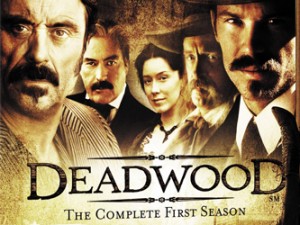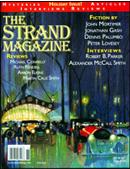Saturday, August 9: Mississippi Mud
I MADE IT UP
by John M. Floyd
I’m climbing onto the wagon a little late, here, but the recent Criminal Brief columns on the subject of truth and falsehoods in fiction got me to thinking. Does truth matter? Do readers really care? How much leeway do we, as writers, have, between fact and fantasy?
I’ll begin by stating that I agree with the points made by Rob and Deborah and Steve. Of course truth matters, and readers do care, and we must be careful of the way we approach all this in our writing. Having said that, I must confess that I’ve stretched the truth in many of my own stories. I hope, as Steve said, I do it honestly.
 Not that I wouldn’t prefer to always stick to the facts. Many of the positive comments I’ve received from readers (I won’t tell you about the negative ones) say they were pleased that I’d used either (1) well-researched information or (2) streets and landmarks and events that they were familiar with. Things that you recognize as being real, or even “feeling” real, are always fun to encounter when reading a story, or even watching a film. One of the best things about the gritty HBO series “Deadwood” was its authenticity and historical accuracy. I doubt that show would have worked on the old “Bonanza” set, with tidy streets and neatly ironed clothes and PG language.
Not that I wouldn’t prefer to always stick to the facts. Many of the positive comments I’ve received from readers (I won’t tell you about the negative ones) say they were pleased that I’d used either (1) well-researched information or (2) streets and landmarks and events that they were familiar with. Things that you recognize as being real, or even “feeling” real, are always fun to encounter when reading a story, or even watching a film. One of the best things about the gritty HBO series “Deadwood” was its authenticity and historical accuracy. I doubt that show would have worked on the old “Bonanza” set, with tidy streets and neatly ironed clothes and PG language.
But when the facts don’t fit what I need for the plot, I’m not above altering them.
One of my alterations resulted in a phone call several years ago from a mystery-magazine editor about a story I had submitted for his consideration. He told me he liked the story, and planned to publish it. “But I need to ask you one question,” he said. “Where’d you find the poison you used to kill the guy?”
 The question caught me off guard. “Where’d I find it?” The poison, in my story, was a lethal fluid from the oscolio blossoms of eastern Africa.
The question caught me off guard. “Where’d I find it?” The poison, in my story, was a lethal fluid from the oscolio blossoms of eastern Africa.
“What I mean is,” he said, “our staff isn’t familiar with the poison you mentioned—it’s not in any of the reference books. We were wondering where you got your information.”
I said, “I made it up.”
“You made it up?”
“I looked everyplace, and couldn’t find a poison that could get into the bloodstream the way I needed it to, and produce the right effects in the right amount of time.” Which was true.
“So you made it up,” he said again.
“Yep.”
“Its origin, the symptoms, everything.”
“That’s right,” I said.
“And oscolio blossoms … ”
“There’s no such thing.”
There was a long, long pause on the other end of the phone line. It was quiet on my end too—I was holding my breath.
Finally the editor said: “Suits me.”
 That was the first story I sold to The Strand Magazine. Since then I’ve had two more stories published there—the latest one is in their current (June-September) issue. I found no reason in this most recent story to invent any new poisons or species of plant life, but I can’t say it would’ve bothered me if I had.
That was the first story I sold to The Strand Magazine. Since then I’ve had two more stories published there—the latest one is in their current (June-September) issue. I found no reason in this most recent story to invent any new poisons or species of plant life, but I can’t say it would’ve bothered me if I had.
Another time I remember bending the truth was when I required, for my plot, an entirely different landscape and building layout in a particular section of a real city. My solution was to happily ignore existing geography and create my own fictional area of town, complete with hotel, lake, shops, etc. It worked fine.
It does not, of course, always work. In one of my favorite old westerns, “The Last Sunset,” the showdown at dusk between Kirk Douglas and Rock Hudson occurred with both of them standing in bright sunlight with noonday shadows pooled around their boots. Guess the crew didn’t want to work late. The same kind of thing happened in John Wayne’s early morning raid on the Indian camp in “The Searchers.” And—if I recall correctly—the scenes in “True Grit” looked a lot more like the Rockies than western Arkansas.
The funny thing is, if the story’s good enough and the inconsistency isn’t too outrageous, I’ll gladly overlook it. I’m reminded of Alisa’s reply the other day to Rob’s column, saying her husband once noted, while watching a scene in “Castaway,” that wheat doesn’t grow that time of year. A date I had in college said something similar when we went to a showing of the original “Psycho.” At the very moment when Vera Miles was headed for the root cellar, where we as viewers knew Tony Perkins’s wacko mother almost certainly lay in wait with her butcher knife, my date whispered, “You know, the hemline on her dress doesn’t look right, for the early 60s.” I couldn’t believe my ears. This otherwise fascinating young lady was more interested in fashion mistakes than in the probability that Ms. Miles was about to meet her showering sister’s murderer.
Again, I admit that the organized part of me wants these details to be correct and authentic, but they’re probably not the kinds of things that would jar me out of a story even if I noticed them. Far more serious, for me, is an error in logic. Anybody remember the first “Mission Impossible” movie, the one with Tom Cruise and the helicopter crash inside the tunnel? Give me a break—I can suspend disbelief for only so long.
But who am I, to criticize? This is, after all, storytelling—and Lawrence Block once said fiction is just a pack of lies anyway.
How many of your grandpa’s favorite tales would have been as much fun if he’d told them the way they really happened?




















Great story about osciolo blossoms.
Speaking of fashion in the movies, when I walked out of the theatre after being stunned by “The Sixth Sense,” I heard a woman smugly telling her companion that she had seen the twist coming because of one of the main characters’ wardrobe. And of course, she was right. The answer is there if you ignore the characters’ faces and watch their clothes.
Rob, I’m glad I didn’t notice the “Sixth Sense” clue you mentioned when I saw the movie in the theatre (I probably don’t have enough fashion sense to have caught it anyhow). I too loved that ending–the only other final twists I’ve enjoyed that much were probably “Presumed Innocent,” “The Spanish Prisoner,” and “The Usual Suspects.”
The impressive thing is, I think the director was very honest with the audience, with all the clues revealed in “The Sixth Sense”–I realized that only after viewing it for the second (and third and fourth) time.
As long as there have been navies, there have been sailors telling sea stories (remember the white whale?). Most are apocryphal and start out the same way, with the sine qua non opening phrase being “This is no s..t.” (S..t is an navy expletive for fecal material, a synonym of the army term bulls..t.) Such guarantees carry little weight. As a doctor in a busy U.S. Naval hospital during the Viet Nam war, I have my dry-land sea stories.
Several times I had occasion to give anesthesia for a wimpy, little red-haired surgeon (an officer) who was habitual in sexually harassing the female surgical technicians (enlisted) in his operating room. In those days, the evil practice had yet to be identified and condemned.
When Linda scrubbed in to assist this surgeon for the first time, in the middle of a hysterectomy he seductively said so loudly everyone in the room could hear, “Gee Linda, I sure would like to get into your pants.”
Linda cheerfully replied as she handed him a clamp, “No thank you, Doctor, one asshole in my pants is quite enough.”
Trust me, that is no s..t!
John,
Thanks for a thought-provoking blog today.
I have been searching and searching for a specific poison to use in my current mystery. Until your column today, it never occurred to me to simply lie about it!
Needing something that will kill immediately upon being injected, I’ve rejected many already. The poisons I found were either too slow or had to be put directly into the blood stream, not just jabbed into the muscle.
If any readers can suggest something that meets this criteria, please let me know. Otherwise, I’ll follow your example and create my own.
Be assured, Fran, I do believe in authenticity, and I’d rather use something based on fact. (All the other characters I’ve poisoned–and there have been quite a few–died of things that can at least be found in reference books, if not in a cabinet here at home.) In this case nothing else would work, so creating a new one appeared the right thing to do. That’s far better than having something that’s real act in a way that’s not.
Isola never existed either, but Ed McBain’s readers never seemed to mind.
I may be an exception, but when something familiar to me is wrong in a story or film I quit reading or watching. An example is the terrain in the movie “Saving Private Ryan.” It wasn’t correct so I got up and left. I was willing to overlook the ridiculous theme of the film, but not the terrain.
Loved the poison story. A female editor once called me to ask if in 1937 a man would have used the word “broad” when speaking of a woman. Not in polite society, I told her, but out on the streets…oh,yes.
Dick, I know what you mean, and I doubt you’re the exception. I do try hard to overlook that kind of thing because I WANT to stay in the dream world and enjoy the story if at all possible — but if the mistake is big enough, no, I can’t forgive it.
One of my pet peeves is fake Southern accents, and (though I don’t suppose I’ve left a theatre because of it) I have certainly switched off TV programs for that reason.
I actually respected Robert Redford for choosing NOT to try to use a British accent for his role in “Out of Africa.” To try it and get it wrong would’ve been worse.
My peeve in any medium—people who screw up lunar and solar eclipses. I threw a pillow at a t.v. once because of a total lunar eclipse that lasted a couple of seconds. (I’ll let Mark Twain slide on “Conneticut Yankee” if only for the description) As for accents, ever seen a movie where it’s (let’s say) the French Revolution and everyone’s talking in French, meaning English with bad French accents??!!